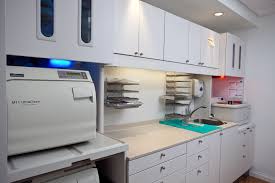
Since pathogenic microorganisms cause contamination, infection, and decay, it becomes necessary to destroy them from instruments, materials, surfaces, before they infect humans. To diminish any accidental possibility of transmission of infectious diseases, recommendations, and suitable guidelines have been in practice for a long time.
What is sterilisation?
Sterilisation is a process to eliminate or to kill any form of micro-organisms either in vegetative or in spore form present is a region or on a surface.
In our practical day with dental practices, we face a serious challenge to maintain or increase productivity while ensuring that the patient’s safety remains to our top priority. A sterilized process that meets the international benchmark and Centers for Diseases Control and Prevention (CDC) guidelines is required for an effective infection control program. The methods used to fulfil all the elements of reprocessing the instruments safely to the patients by eliminating their risks and maximizing their efficiency.
Waste management
Bluetooth Dental Studio has a designated area for instrument re-processing which is separate from the treatment room so, there is no chance of having a cross-contamination while cleaning, sterilizing instruments, the disposal of single-use sharp instruments such as blades, needles, orthodontic wires or any glass is done in the same dental treatment room. The sharp items are then segregated in a different room as the instruments may pose a risk of injury are discarded into a separate white plastic container, while infected wastes but non-sharp instruments such as cotton saliva-ejector, gloves are collected into the red container as a thrash with a level of biohazard over it. Once the materials are collected in different colored bags, It is handed over to CWC. Finally, the tray or cassette of reusable instruments is taken to the cleaning and sterilization area for processing.
Process
The mechanical means of cleaning the instruments are being used. In case if procedures are used and hand scrubbing is necessary, then heavy utility gloves, mask, eyewear and gown is always be worn while cleaning and minimize the risk of puncture injury by scrubbing and only one instrument at a time is cleaned while holding it low in the sink. The different methods of sterilization used in our clinic are:
Steam autoclave
We use steam autoclaves as it eliminates microorganisms from any surface. Steam autoclaves are the most commonly used type of heat sterilizer in dental practices. Two types of processes employ steam under pressure. The difference between the two is the manner in which the machine evacuates the air from the sterilization chamber and then introduces the steam. The steam entering the chamber from the water reservoir displaces the air as it leaves the chamber. The combination of pressurization of the chamber, steam and a high temperature for a prolonged period has the ability to kill virtually all microorganisms. The instruments are wrapped and placed in the autoclave for 15-30 minutes at 121°C and 15 psi. The sterilization cycle time decreases as the temperature is increased. Any interruption of the cycle will result in instruments that are not sterile and therefore not safe for use on patients. After the sterilization cycle, the sterilizer must depressurize and the packs remain in the sterilizer for another 20-30 minutes for drying. The unit must only be opened after completion of the drying cycle.
To know more about us, please visit Bluetooth Dental Studio.